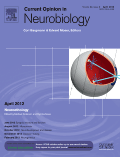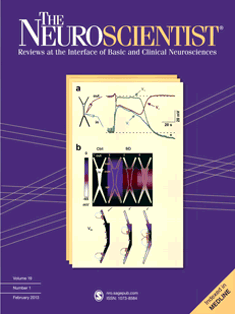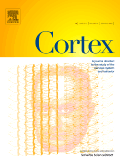
eNeuro
Scope & Guideline
Connecting minds to advance the science of the nervous system.
Introduction
Aims and Scopes
- Neural Mechanisms of Behavior:
Research exploring how various neural circuits and neurotransmitter systems influence behavior, including studies on decision-making, learning, and memory. - Neurodevelopment and Plasticity:
Investigations into how neural connections and brain structures develop and adapt over time, with a focus on plasticity in response to experience or injury. - Neuropharmacology and Therapeutics:
Studies examining the effects of pharmacological agents on neural function and behavior, aimed at identifying potential therapeutic targets for neurological disorders. - Advanced Imaging and Electrophysiological Techniques:
Utilization of cutting-edge imaging and electrophysiological methods to study brain activity and connectivity in real-time, enhancing our understanding of neural dynamics. - Neuroinflammation and Neurodegeneration:
Research into the roles of neuroinflammation and neurodegenerative processes in various diseases, with a focus on their cellular and molecular underpinnings. - Translational Neuroscience:
Work aimed at bridging basic neuroscience research with clinical applications, particularly in understanding and treating neurological and psychiatric disorders.
Trending and Emerging
- Neurotechnology and Computational Approaches:
An increasing number of studies are focusing on neurotechnologies, including advanced imaging, machine learning, and computational modeling, to analyze complex neural data and enhance experimental methodologies. - Interdisciplinary Research:
There is a growing trend towards interdisciplinary approaches that combine neuroscience with fields such as engineering, genetics, and computer science, fostering novel insights into brain function. - Neurodevelopmental Disorders:
Research into the underlying mechanisms of neurodevelopmental disorders, particularly autism and related conditions, is gaining momentum, with an emphasis on genetic, environmental, and neurobiological factors. - Neuroinflammation and Immune System Interactions:
Studies investigating the role of neuroinflammation and the immune system in neurological diseases are becoming more prevalent, reflecting a shift towards understanding brain health in the context of systemic processes. - Personalized and Precision Neuroscience:
Emerging research is increasingly focused on personalized approaches to treatment and understanding individual variability in neural responses, paving the way for tailored therapeutic strategies.
Declining or Waning
- Basic Behavioral Neuroscience Studies:
There has been a noticeable decline in purely behavioral studies without a strong molecular or neural basis, as the field increasingly emphasizes mechanistic insights. - Traditional Neuroanatomy:
Research focusing solely on classical neuroanatomical mapping without integrating functional or molecular data is becoming less common, as the field moves towards a more dynamic understanding of brain architecture. - Static Models of Neurodevelopment:
Research using static or simplistic models of neurodevelopment is declining in favor of more complex, dynamic models that account for environmental interactions and genetic factors. - Aging and Neurodegeneration as Isolated Topics:
While aging and neurodegeneration remain important, studies addressing these issues in isolation, without considering their interactions with other neurological processes, are less frequently published.
Similar Journals

CURRENT OPINION IN NEUROBIOLOGY
Navigating the Evolving Landscape of Neurobiological ResearchCURRENT OPINION IN NEUROBIOLOGY, published by CURRENT BIOLOGY LTD, stands as a premier interdisciplinary journal in the field of neuroscience, specifically focusing on the latest advancements and emerging trends in neurobiology. With an impressive impact factor bolstered by its classification in Q1 in the Neuroscience (Miscellaneous) category and a notable Scopus rank of #16 out of 113 within General Neuroscience, this journal serves as an essential resource for academics, professionals, and students alike. Since its inception in 1991, CURRENT OPINION IN NEUROBIOLOGY has consistently provided insightful reviews covering various aspects of neurobiological research, thereby enhancing our understanding of complex neural processes. While the journal is not open access, it remains committed to disseminating high-quality research and fostering scholarly dialogue, making it a critical platform for those seeking to keep abreast of the dynamic developments in neuroscience.

NEUROSCIENTIST
Pioneering Insights into the Human BrainNEUROSCIENTIST is a leading journal in the field of clinical neurology and neuroscience, published by SAGE Publications Inc. With an impressive impact factor reflected in its Q1 quartile ranking in both clinical neurology and miscellaneous neuroscience as of 2023, this journal positions itself as a crucial platform for the latest research and advancements in the neural sciences. Spanning from 1995 to 2024, NEUROSCIENTIST features a range of high-quality, peer-reviewed articles that cater to researchers, practitioners, and students alike. Although it does not offer Open Access options, the journal remains a vital resource owing to its Scopus rankings, situating it within the top percentile of its categories: ranked #28 out of 400 in clinical neurology and #15 out of 113 in general neuroscience. The journal's commitment to disseminating significant findings underlines its importance in fostering advancements in neurological understanding and treatment.

Brain and Behavior
Connecting Minds: Where Neuroscience Meets Behavior.Brain and Behavior is a premier open-access journal published by WILEY, dedicated to advancing the field of Behavioral Neuroscience. With its ISSN 2162-3279, the journal has established itself as a vital resource for researchers, professionals, and students alike, fostering the dissemination of cutting-edge research since its inception in 2011. Renowned for its rigorous peer-review process, it enjoys a commendable Q2 ranking within the field, reflecting its impactful contributions and relevance in the scientific community. The journal not only emphasizes innovative studies that bridge behavioral science and neuroscience but also serves as a platform for diverse methodologies and interdisciplinary approaches. Accessible [open access](https://onlinelibrary.wiley.com/journal/21623279), Brain and Behavior invites submissions that explore the neural mechanisms underlying behavior, aiming to engage a global audience eager to expand the boundaries of knowledge in this dynamic field. Positioned in the heart of the United States, at 111 River St, Hoboken, NJ, it is strategically placed to collaborate with leading institutions and researchers worldwide.

ASN Neuro
Connecting Researchers to Transformative Neuroscience InsightsASN Neuro is an esteemed academic journal published by Frontiers Media SA, focusing on critical advancements in the fields of neurology and neuroscience. Since its inception in 2009, it has established itself as an Open Access platform dedicated to fostering the dissemination of knowledge and research findings that address the complexities of the nervous system. With an impressive impact factor and consistently ranking in the top quartiles of its categories—Q1 in Neurology (clinical) and Q2 in Neuroscience (miscellaneous)—ASN Neuro is recognized for its high-quality publications that cater to the evolving challenges in clinical neurology and general neuroscience. Currently, it ranks 68th out of 400 journals in Clinical Neurology and 28th out of 113 in General Neuroscience, affirming its reputable position within the academic community. Researchers, professionals, and students alike are encouraged to contribute to and benefit from this impactful journal as it presents a unique opportunity to engage with cutting-edge research, innovative methodologies, and insightful reviews in the ever-evolving landscape of brain science.

CORTEX
Transforming Knowledge into Practice in Cognitive ScienceCORTEX is a premier international journal published by Elsevier Masson, focusing on the cutting-edge areas of cognitive neuroscience, psychology, and neurology. With an impressive impact factor that places it in Q1 quartiles across multiple categories such as Cognitive Neuroscience and Neuropsychology, this journal serves as a vital resource for researchers, clinicians, and students alike. Established in 1964, CORTEX has continued to excel in disseminating high-quality scholarly work, offering insights that significantly enhance our understanding of the brain's functioning and behavior. Although not an open-access publication, it provides various access options to ensure the dissemination of knowledge is as wide-reaching as possible. As the field of cognitive psychology evolves, CORTEX remains at the forefront, fostering an environment for interdisciplinary collaboration and innovation. Researchers seeking to stay engaged with the latest advancements will find CORTEX an indispensable tool for their professional development.

NEUROSCIENCE
Connecting scholars through groundbreaking neuroscience.NEUROSCIENCE, published by PERGAMON-ELSEVIER SCIENCE LTD, has established itself as a reputable journal in the field of neuroscience since its inception in 1976, continuing its contributions through 2024. With a Category Quartile ranking of Q2 in Neuroscience (miscellaneous) and a Scopus Rank of #41 out of 113, this journal represents a critical platform for the dissemination of innovative research and insights. Although it currently does not offer open access options, NEUROSCIENCE aims to advance our understanding of the nervous system by publishing high-quality original research, reviews, and methodological articles, thereby engaging a comprehensive audience of researchers, professionals, and students alike. With an impact factor that reflects its significance in the scientific community, this journal remains a go-to source for cutting-edge discoveries and scholarly discussions in the dynamic field of neuroscience.

BEHAVIOURAL BRAIN RESEARCH
Fostering Innovation in Brain-Behavior ResearchBEHAVIOURAL BRAIN RESEARCH, published by Elsevier, is a leading scholarly journal that has been at the forefront of research in Behavioral Neuroscience since its inception in 1980. With an ISSN of 0166-4328 and an e-ISSN of 1872-7549, this journal caters to a global audience of researchers and professionals keen on exploring the intricate relationships between behavior and neural processes. As of 2023, it holds an impressive Q2 ranking within its category, showcasing its significant impact with a Scopus rank of #28 out of 88 in the field, placing it in the 68th percentile. While the journal does not offer open access, it remains accessible through institutional subscriptions, ensuring that its high-quality research is disseminated effectively. The journal's commitment to advancing knowledge in behavioral neuroscience makes it an indispensable resource for those looking to delve deep into the complexities of brain-behavior interactions and foster innovative approaches in both research and clinical applications.

NATURE REVIEWS NEUROSCIENCE
Bridging emerging trends with established knowledge.NATURE REVIEWS NEUROSCIENCE is a prestigious journal published by NATURE PORTFOLIO, renowned for its commitment to advancing the field of neuroscience. Since its inception in 2000, it has become a significant platform for disseminating comprehensive reviews and insights that shape the understanding of neurological science. With an impressive Scopus ranking of #2 out of 113 in the General Neuroscience category, this journal consistently engages the top 2% of researchers and professionals in the field, underscoring its impactful contributions. The journal not only provides a forum for high-quality reviews but also bridges emerging research trends with established knowledge, fostering a robust discourse among scholars and practitioners. As a Q1 journal in Neuroscience (miscellaneous), NATURE REVIEWS NEUROSCIENCE offers invaluable access to critical research developments, making it an essential resource for students, researchers, and professionals aiming to stay at the forefront of neuroscience advancements. Explore the latest findings and engage with a global community dedicated to unraveling the complexities of the nervous system.

BRAIN RESEARCH
Advancing the frontiers of neuroscience.BRAIN RESEARCH is a premier journal published by Elsevier, specializing in the intricate domains of neuroscience, developmental biology, and molecular biology. Established in 1966, this esteemed publication has become a cornerstone for researchers, professionals, and students dedicated to advancing our understanding of brain function and disorders. With an impressive impact factor and a consistent presence in the Q2 quartiles across key categories—such as Developmental Biology, Neurology, and Neuroscience—it stands out as an essential resource for disseminating innovative research and pioneering insights. The journal's scope encompasses both clinical and fundamental studies, fostering a multidisciplinary approach to the complexities of neural systems. Although it is not an open-access journal, BRAIN RESEARCH provides a vital platform for sharing progressive findings that can inspire future studies and contribute significantly to the evolutionary discourse in neuroscience. Based in the Netherlands, at RADARWEG 29, 1043 NX AMSTERDAM, BRAIN RESEARCH continues to shape the landscape of neuroscience research, inviting submissions that explore the latest discoveries and therapeutic strategies.

Molecular Brain
Connecting Minds through Open Access Neuroscience ResearchMolecular Brain is a prestigious open-access journal published by BMC, dedicated to advancing the field of neuroscience with a particular focus on cellular and molecular mechanisms. Since its inception in 2008, the journal has been committed to disseminating high-quality research that explores the intricate workings of the brain, particularly in areas related to cellular and molecular neuroscience. Located in the heart of London, England, Molecular Brain has garnered significant recognition in the academic community, boasting a 2023 categorization in the Q2 quartile for both Cellular and Molecular Neuroscience and Molecular Biology, reflecting its growing influence and relevance in these fields. With its Scopus ranks placing it in the top 32% and 38% of its respective categories, the journal serves as an essential platform for researchers, professionals, and students alike, encouraging collaboration and knowledge-sharing through its accessible online format.